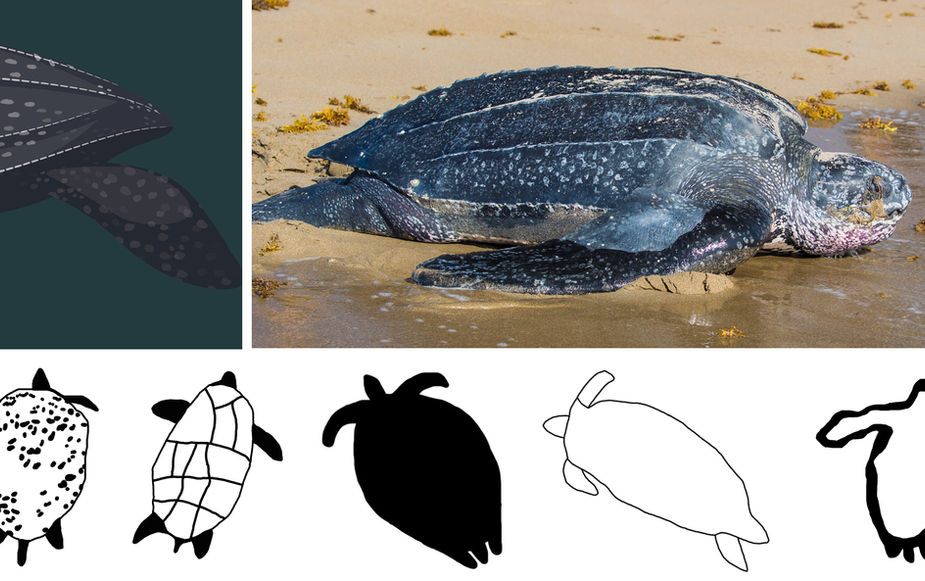

Sarah de Koning, Jo McDonald
Each of the seven turtle species known to have inhabited the archipelago can be identified in the rock art of the Murujuga. Where species could not be identified, this was due to engravings having characteristics of multiple species, a possible deliberate decision by the artist.
Quantitative attribute measurements of head length/width, carapace length/width, flipper length/angle, hind leg length and tail length were taken of the turtle motifs while quantitate attributes such as carapace pattern and contrast state were also recorded.

Analysis of these attributes has shown that traits specific to each turtle species can be assigned to turtle motifs thereby creating species-types to help identify these in rock art.
Unlike western science identification models which rely on knowledge of the carapace patterns of individual species, artists on the Dampier Archipelago acutely understood the more subtle differences in dimensions between the different turtle species.
It is evident that different groups of people have occupied the Dampier Archipelago through time. Dramatic changes in the frequencies of the carapace pattern categories have been argued to reflect the influence of changes in social, geographical and economic strategies.

Click on each photo to learn more
All photographs within this monograph were taken by CRAR+M researchers, partners and students, and have been given cultural approval for publication by Murujuga Aboriginal Corporation. Future use of imagery would require additional permissions from Murujuga Aboriginal Corporation and CRAR+M.
© 2023. This work is licensed under a














